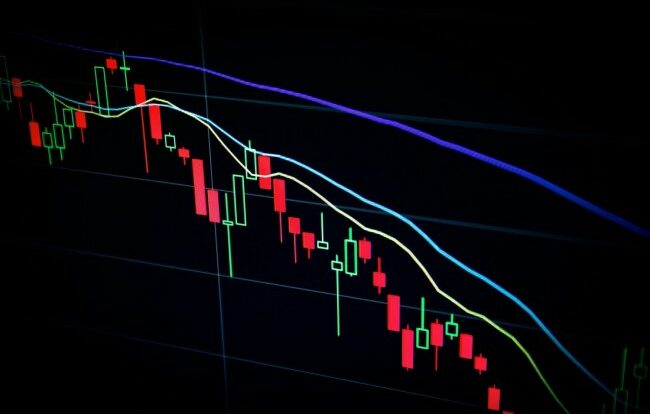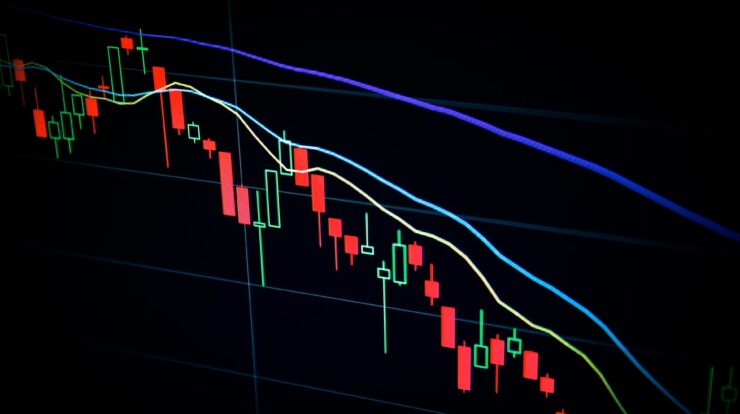
This will be a brief write-up on the Dragonfly Doji Candlestick pattern popularized in the past two years. The Pattern is headed by a Doji developing right after the open and continues to trend sideways for about three candles before finally breaking down.
The article will go over how the Pattern has been popular with traders due to its ability to predict reversal from trends.
What is the Dragonfly candlestick?
The Dragonfly Doji candlestick is one of the most popular trading indicators because it is sensitive to price changes. This particular candlestick pattern forms when a Doji candle appears at the end of an uptrend, effectively marking the end of this bullish market trend. Since this particular type of Pattern occurs at the close, dragonfly dojis are often ascertained as undercuts or strong rejections. It is important to note that the dragonfly candle isn’t a trade signal by itself. Traders must consider it part of a broader and well-thought-out trading strategy.
What a Dragonfly Indicates
A Dragonfly can signify a trend reversal or show indecision among traders. It comprises two converging lines, with the lower at an angle higher than the upper one. These shapes represent that some traders have sold and others have bought, but there are no clear buyers or sellers during the period represented by these lines. Dragonfly is also considered an essential indicator that a trend may reverse because it has been found to occur at points where a market appears to be reversing its direction. It shows that the bulls and the bears are on equal footing, and it occurs before the direction of the market shifts. This shape is similar to a Dragonfly but is more complex, with more points at which the lines intersect. In most cases, this Doji pattern forms after a long period of lower lows and lower highs or vice versa for an uptrend. They may draw trend lines along these highs or lows to determine how the market might move once the Pattern completes.
How is the Dragonfly pattern formed?
The Dragonfly shape appears after a period of bullish or bearish activity, and the shape itself graphically depicts the indecision that exists during this time. The upper and lower lines converge together but at an angle higher than the preceding price action. This angle signifies a struggle between the bulls and the bears, implying that neither side has won. The result is a Doji where neither side has completely taken control of the market.
How to identify a Dragonfly pattern?
A solid pattern for a Dragonfly candle to form is when the price closes at the end of an uptrend or before it begins. The Doji, an unusual candle for this strategy, sits on top of a higher high or lower low with an upper shadow, and both the bullish and bearish extremes are clearly defined. In some cases, however, the Doji can look more like five zigzags with a reverse head and tail.
How Do Traders Interpret a Dragonfly Pattern?
The dragonfly candle is a technical indicator from the Japanese candlestick patterns. The candle’s body is a Doji candle, and it has long upper and lower shadows. The upper shadow should be about twice as long as the lower one, but in some cases, it can be equal to or less than the lower one.
The name of this Pattern derives from its appearance: the short “body” suggests a dragonfly with outstretched wings. The upper shadow similarly suggests a long body, while the lower shadow shows us the insect’s short legs.
Now, the dragonfly pattern is one of the most common candlestick patterns out there. It is also known as a dragonfly stake or long-legged Doji. It is formed from two consecutive Doji candles with long upper and lower shadows. It’s called Dragonfly because of its appearance body.
What does the Dragonfly pattern tell traders?
The dragonfly pattern is one of the most well-known candlestick patterns globally, and it’s so named because it resembles a dragonfly.
You use this candle to determine the overall direction of a trend. A Dragonfly indicates indecision among traders. It is formed when a Doji candle forms on top of an uptrend or before a downtrend begins. With that, you can take action based on your strategy, as long as you have an idea about where you’re going.
The Dragonfly pattern is made up of 2 Doji candles. The 1st Doji candle has a long upper shadow and long lower shadow. The 2nd candle also has a long upper shadow and lower shadow.
A good trading strategy is to look for first or second Dragonfly patterns, then wait to see whether the Pattern will complete.
How to trade when you see the Dragonfly Doji?
This candlestick pattern is a great trend reversal indicator, but it only works when it appears on top of an existing trend. Therefore, you should wait to see whether the asset’s price has been moving in one direction for quite some time before beginning a transaction.
The Dragonfly pattern appears at the end of an uptrend and marks a change in the asset’s overall direction. Doji patterns usually appear at reversal points or severe market fluctuations.
Precautions to take before following the Pattern
When trading the Dragonfly pattern, be careful to confirm that the trend has reversed. A bearish Doji appears on a downswing, indicating a trend reversal. Therefore, if you are trading on the same side as a previous trade, make sure you have some excellent news to back it up!
If you see an asset forming this Pattern at a high-volume price point, do not buy at that price level as there is no confirmation for this appearance.
Advantages and disadvantages of Dragonfly Doji
The Dragonfly may be a good indicator for trend reversal, but you need to wait for the completion of the entire Pattern before taking any action. You should also be careful not to trade against an asset that has just created a Dragonfly at a high-volume price point. The Pattern can sometimes appear on the upswing.
Advantages
- This is the most widely used candlestick pattern.
- It serves as a good reversal.
Disadvantages
- The Doji pattern can appear before an uptrend or before a downtrend begins, making it unclear whether it represents a positive or negative trend reversal.
- Its appearance can be misleading, especially at the top of an uptrend or after a significant price correction and drop in the asset’s price level.
Conclusion
Doji pattern can be a good reversal indicator to trade with because it is one of the most widely used candlestick patterns. However, you must pay attention to whether the asset’s price has been moving in one direction for quite some time before beginning any transaction. Also, it would be best if you waited for a second confirmation to act on.


